Salvia lyrata
(Lyreleaf Sage)
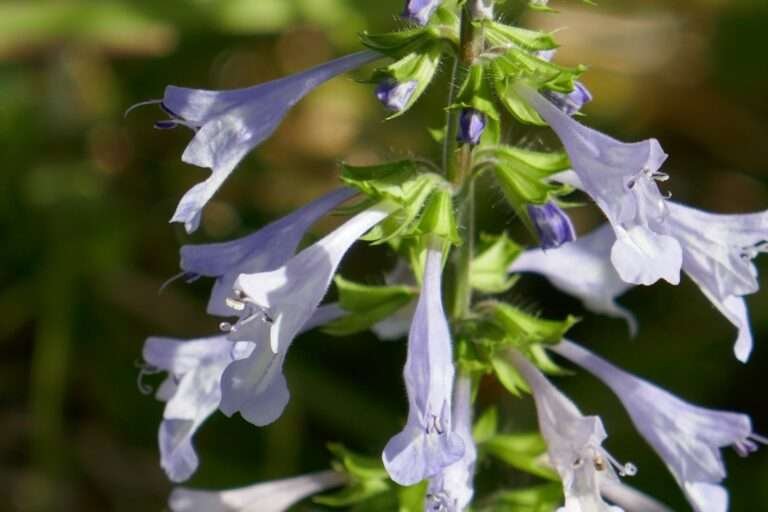
Its common name is lyreleaf sage or lyre-leaf sage.
Its Latin name is Salvia lyrata.
It is found is in the Laminaceae, or mint, family.
Lyreleaf sage is a perennial wildflower that grows to a height of about 24 inches when they have flower stalks.
The leaves are usually absent on the stem. Most of the leaves appear in a rosette at the base of the plant at ground level and can grow to a length of about eight inches.
The leaves are a dark green with some having maroon splotches through the center. The margins of the leaves may be toothed, entire or lobed. Some appear ‘lyre’ shaped, hence the name. A lyre is a small, hand held, harp. The stems are square as with most mints.
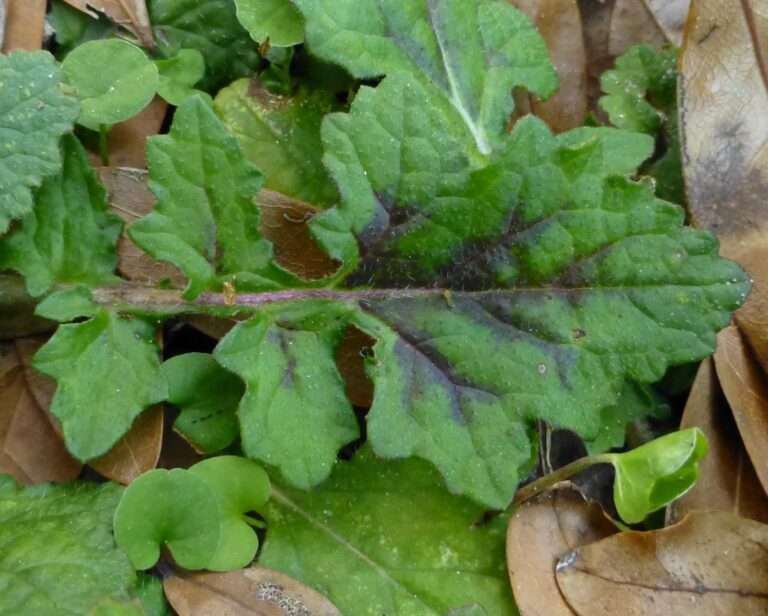
The flowers are pale blue to purple and appear in late winter and early spring at the top of a tall stalk, which can reach 24 inches in height. If one keeps them dead headed they will continue to bloom, however I cannot dead head acres of it so I let it go and generally only get one good set of blooms with an occasional stray bloom here or there.
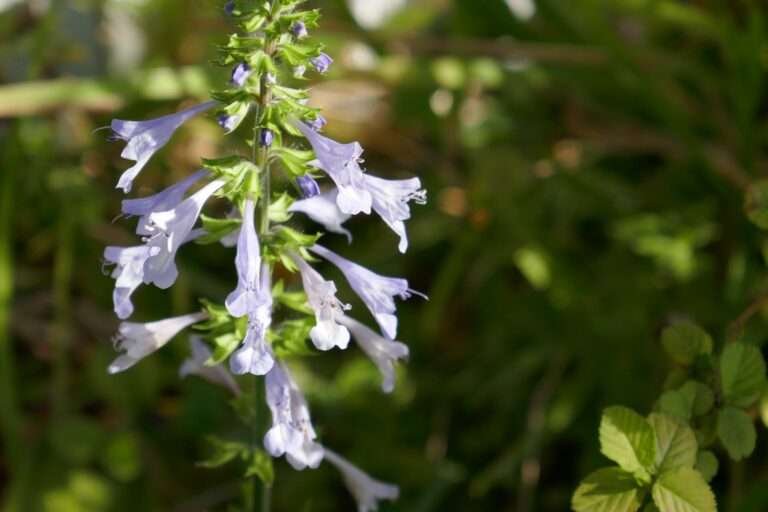
The seeds are small, black, and round. They are found within the dry seed heads. The ends of the heads are very sharp and can leave splinters in your fingers so be careful when cleaning the seed pods.
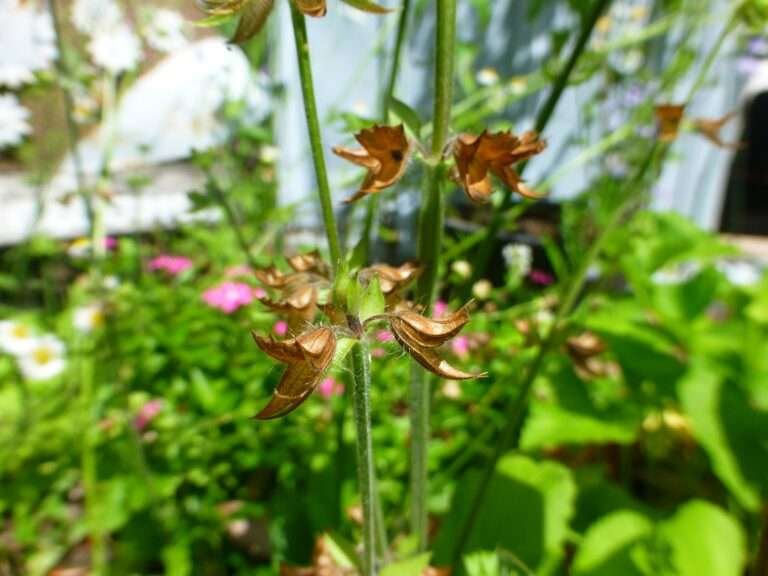
It occurs naturally in roadsides, thickets, and disturbed sites.
It grows in just about every condition except in, or near, salt water.
It is found naturally occurring throughout Florida down to about Collier County.
Its native range is the southeastern United States.
In the home landscape it grows in part-shade to full sun with average moisture. The individuals of this native wildflower are not that impressive, but in mass they are beautiful. I spread seeds along the edges of paths, the driveway, and wooded areas where the grass will not grow. A lot of my property is shaded by large oaks and little grass will grow so I allow lyre leaf sage to fill those areas.
It is not generally a good plant for flower beds because it reseeds so readily and can quickly take over.
However, it is excellent along path or forest edges grown in mass. In order to attempt to keep it contained in specific areas I mow it off, once the migratory birds have moved on, making sure to blow whatever seeds may be left into the area where I want it growing and not in the walking path next to it.
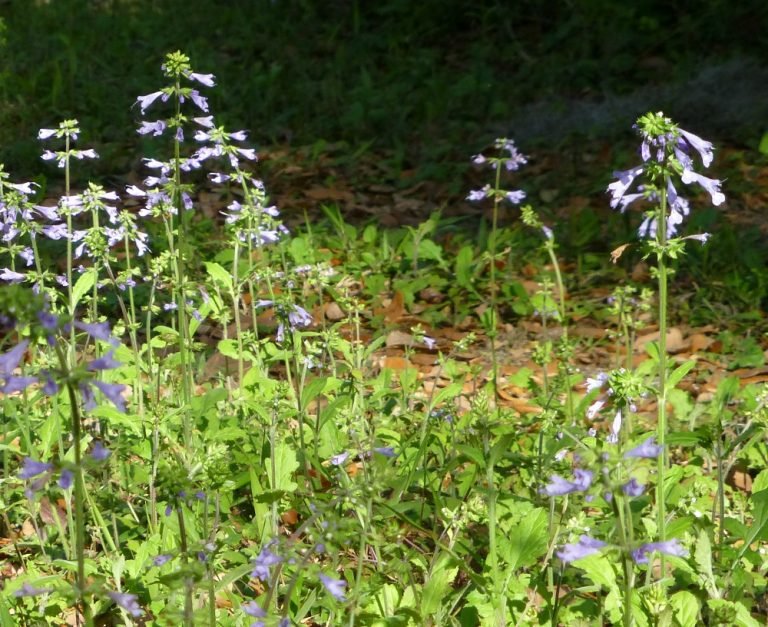
It is a fantastic source of nectar for butterflies and bees in late winter when little else is blooming.
Migratory birds, such as gold finches, use the seeds as a source of food in the winter and gray squirrels like to eat the unopened flowers, seeds and seed pods.

Propagation is easily achieved by sowing seed, or transplants.
The seeds need light to germinate so should not be covered more than an eighth of an inch.
When collecting seed stalks it is best not to let them go totally brown all the way up the stalk because once they have reached the brown stage most have fallen out of the pods already. Pick then when there are still several green seed heads near the top of the stalk because if you wait too long the seeds on the lower stem will have fallen out. Cut the entire stalk off close to the leaves and place somewhere to dry. Collecting seed stalks does double duty because it will also get the plant to produce another flower stalk so you’re dead heading and seed collecting at the same time!
Lyreleaf sage transplants very easily no matter the size of the plant. If you find them in a place where you don’t want them do not hesitate to move them to your preferred site.
When transplanting it will help the plant recover from the shock more quickly if you remove any flower stalks. Be sure to keep it watered until it becomes established.
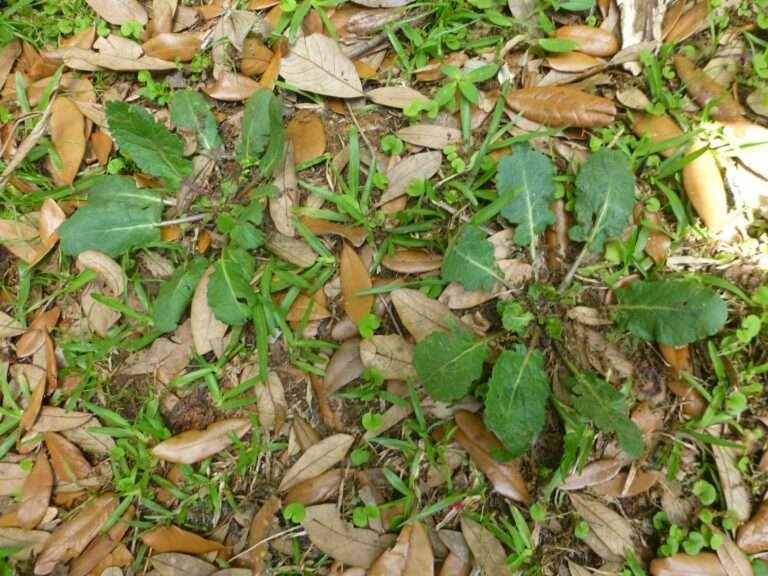
You Might Also Like: Milkweeds Native to Florida
